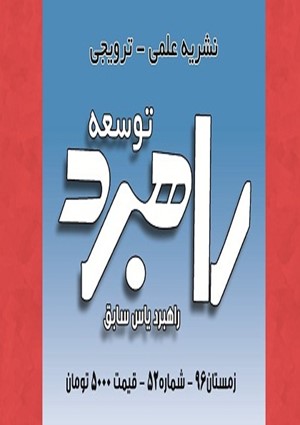-
-
List of Articles
-
Open Access Article
1 - The Political Economy of Investment in Non-Productive Sectors of Iran
دکتر سیداحسان خاندوزی -
Open Access Article
2 - The Formation of Rentier State and its Impact on the Collapse of the Second Pahlavi Regime
-
Open Access Article
3 - The Impact of Social Collaboration on Economic Growth
Parvaneh Salatin -
Open Access Article
4 - Revisiting Social Discount Rate and its Calculating & Applying Approaches
َAmir Hossein Mozayani -
Open Access Article
5 - Knowledge Based City As an Interdisciplinary Concept
-
Open Access Article
6 - The Sociological Study of the Implications of Cultural the Apartments Life in Iran (Stressing Tehran)
-
Open Access Article
7 - Formal Education and Agricultural Productivity of Labor: Evidence from Iran, MENA and World
-
Open Access Article
8 - Organizational Entrepreneurship and its Role in Resistance Economy Using Factorial Analysis and Structural Equations
-
Open Access Article
9 - Estimation of Risk and Uncertainty in the Iran’s Labor Market
دليري daler -
Open Access Article
10 - Analyzing the Strategies for Business Growth and Development in the Field of Industries and Mines (Case Study: South Khorasan Province)
-
The rights to this website are owned by the Raimag Press Management System.
Copyright © 2017-2025







